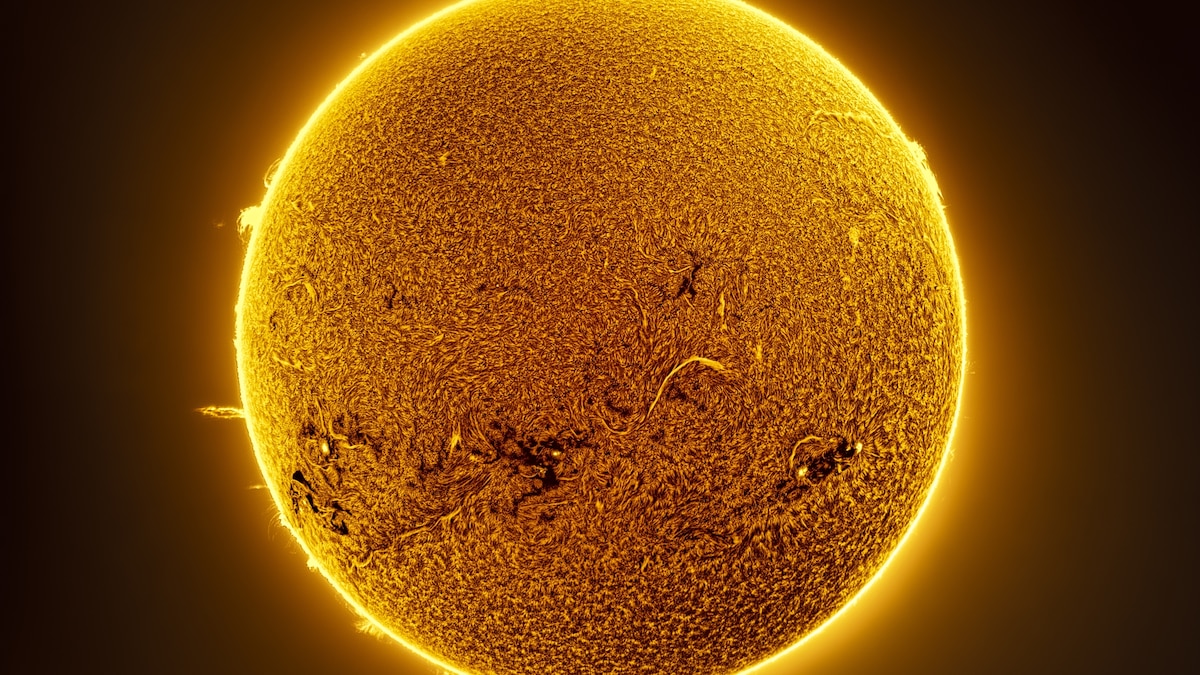Now Reading: Photographer Captures Stunning Images of Rare Solar Tornado
-
01
Photographer Captures Stunning Images of Rare Solar Tornado
Photographer Captures Stunning Images of Rare Solar Tornado

Swift Summary
- Portuguese astrophotographer Miguel claro has captured detailed images of solar phenomena from teh Alqueva Dark Sky Reserve in Portugal over several years.
- The sun’s chromosphere, an orange-red atmospheric layer, hosts dynamic features such as solar tornadoes and prominences caused by nuclear fusion-generated energy.
- Solar phenomena documented include:
– Solar Tornadoes: Can rotate at speeds up too 186,000 miles per hour. Estimated 11,000 exist on the sun at any given time.
– Solar Flare (April 30, 2022): Caused a strong shortwave radio blackout over the mid-Atlantic Ocean and europe.
– Severe Geomagnetic Storm (May 10, 2024): The most extreme in two decades; triggered auroras across Northern hemispheres and impacted technology like power grids and satellites.
– Solar Prominence (April 24, 2025): A large fiery eruption extending outward from the sun’s surface was recorded.
– Plasma Eruption (“Braided Plasma”) (June 15, 2025): Resulted from tangled magnetic fields resembling braided patterns.
!The Sun’s chromosphere during severe geomagnetic activity.
!A detailed view of a large solar prominence erupting from the sun’s surface.
!An eruption resembling “braids of hair” due to plasma tangling magnetic fields.
Indian Opinion Analysis
India’s increasing reliance on space-based technologies underscores why global research into solar phenomena is critical for its economy and national security. severe geomagnetic storms that disrupt satellites or power grids pose risks to sectors like telecommunications, banking systems reliant on GPS timing signals, and scientific missions such as India’s Chandrayaan and Gaganyaan programs. Forecasting these events could mitigate potential economic losses or technological interruptions.
Moreover, this imagery deepens humanity’s understanding of essential physical processes governing stars-a cornerstone in advancing astrophysics research globally. India could use such insights to complement partnerships with agencies like ISRO or collaborate internationally in studying impacts on Earth’s climate systems linked to solar activity.
Read More: National Geographic Article


























